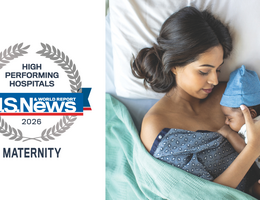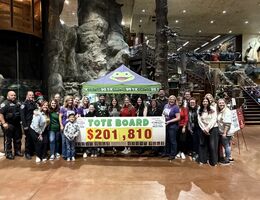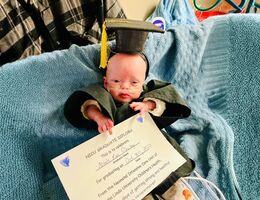

In November 2023, a slight cough for 11-year-old Ricardo Alvarado quickly spiraled into something much more severe. His mother, Rosalba Alvarado, initially assumed it was a throat infection. After taking him to a doctor, Ricardo was treated with antibiotics and appeared to improve.
Soon after, his symptoms escalated—he developed fevers, but his body felt cold to the touch. By December, with the family planning a New Year's visit to relatives in Mexicali, Rosalba’s concerns grew.
"We stopped at the hospital just to make sure Ricardo was okay so we could enjoy our time with family," Rosalba said. But the hospital visit in Mexicali revealed much more than a simple infection. "They told us he had pneumonia.” They returned to their hometown of Indio, CA, and sought further medical help, where doctors confirmed the pneumonia diagnosis.
As Ricardo's condition worsened, the family took him to an urgent care facility in Rancho Mirage. That's when the gravity of his situation was revealed. "The doctors said it wasn't just pneumonia, something was wrong with his blood, and they needed to send him to Loma Linda," Rosalba said.
In January, after being admitted to Loma Linda University Children's Hospital, Ricardo's family was met with devastating news: Ricardo had acute myeloid leukemia (AML), a high-risk cancer of the white blood cells. Immediate treatment was essential, and doctors, including Sajad Khazal, MD, and Latika Puri, MBBS, pediatric hematologist-oncologists at LLUCH, began Ricardo's journey through chemotherapy.
For five months, Ricardo endured aggressive treatments, but he needed a bone marrow transplant, his most critical step toward recovery.
"Ricardo didn’t have a matching donor in the registry, largely due to the underrepresentation of minority groups in bone marrow registries," Khazal said.
Patients from diverse ethnic backgrounds face lower chances of finding a suitable donor compared to white patients because genetic markers used to match donors and recipients are more varied within minority populations, making it harder to find a perfect match. Increasing the number of minority donors is vital to improving survival rates and offering life-saving treatments for patients with blood cancers and other life-threatening conditions.
"However, thanks to advances in research and transplant techniques, Ricardo was able to receive a half-match transplant from a family member,” said Khazal.
Ricardo’s older sister, Melissa, was his donor for the haploidentical transplant.
Reflecting on this challenging process, Khazal shared, "We knew that without this transplant, Ricardo's chances of survival were slim. Thanks to his sister and the specialized treatment plan, we gave him the best chance of a cure."
Today, Ricardo is five months post-transplant and on the road to recovery. "He's doing well now," Rosalba said. "He's off chemo, and we only go in for bloodwork check-ups. His hair is growing back, and he's eating well again." While he can’t return to in-person classes yet, Ricardo will start sixth grade online this fall.
Looking ahead, the family remains hopeful. "Ricardo used to love karate, and I know he'll want to go back to it once he's strong enough," she said.
Though his battle is far from over—he continues to take medication to prevent rejection of his bone marrow—the family is optimistic about the future. "We're blessed," Rosalba said. "We're just so happy to have him home."
To learn more about pediatric chronic and complex care, talk to a pediatrician.


